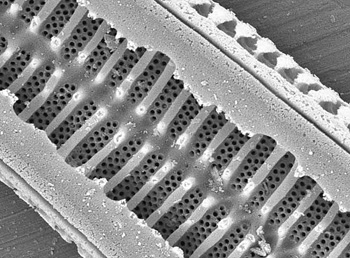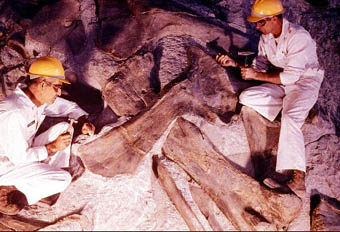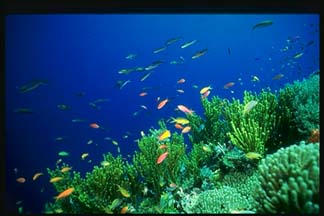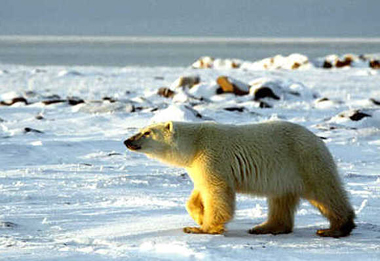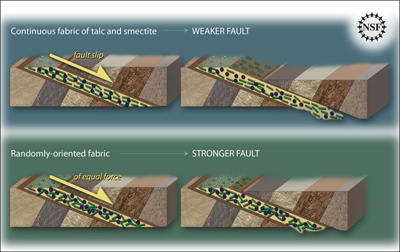Click on image for full size
Courtesy of Peter Siver, Connecticut College
Microscopic Fossils Offer Big Clues to Earth's Climate
News story originally written on January 7, 2009
Some scientists look for fossils that are so small they need an electron microscope to find them. The fossils may be small, but what they can tell us about the climate of ancient Earth can be huge.
These tiny fossils are diatoms, microbes that are each made of just a single cell. Diatoms are still found in lakes and the ocean today. They are related to algae and are in the Domain Eukaryota and Kingdom Protista.
Scientist Peter Siver has been looking for diatoms for 20 years. He has found diatoms all over North America and has discovered 60 species – including diatoms that are living today and ones that were fossilized long ago. He finds them in the mud at the bottom of lakes or in rock formed from mud.
He found fossil diatoms in 48 million years old rocks in the cold tundra of northern Canada. Looking at these diatoms under an electron microscope, he discovered that they were the same type that live in the tropics today. So, these tiny fossils tell us that that the chilly Arctic used to be quite warm 48 million years ago.
"By knowing the different species and being able to tell them apart, we can better tell how water bodies are being affected and changing. This has huge implications for understanding climate change," Siver said.
Before the invention of the electron microscope, it wasn’t easy to identify diatom species. Under the electron microscope, Peter Siver can see differences in microbes that wouldn't have been visible to scientists a century ago. An electron microscope can magnify an image to 100,000 times its size. In comparison, most light microscopes can only magnify objects 1,000 times. This makes the electron microscope an excellent tool for fossil hunting, at least if you are looking for fossil microbes!


